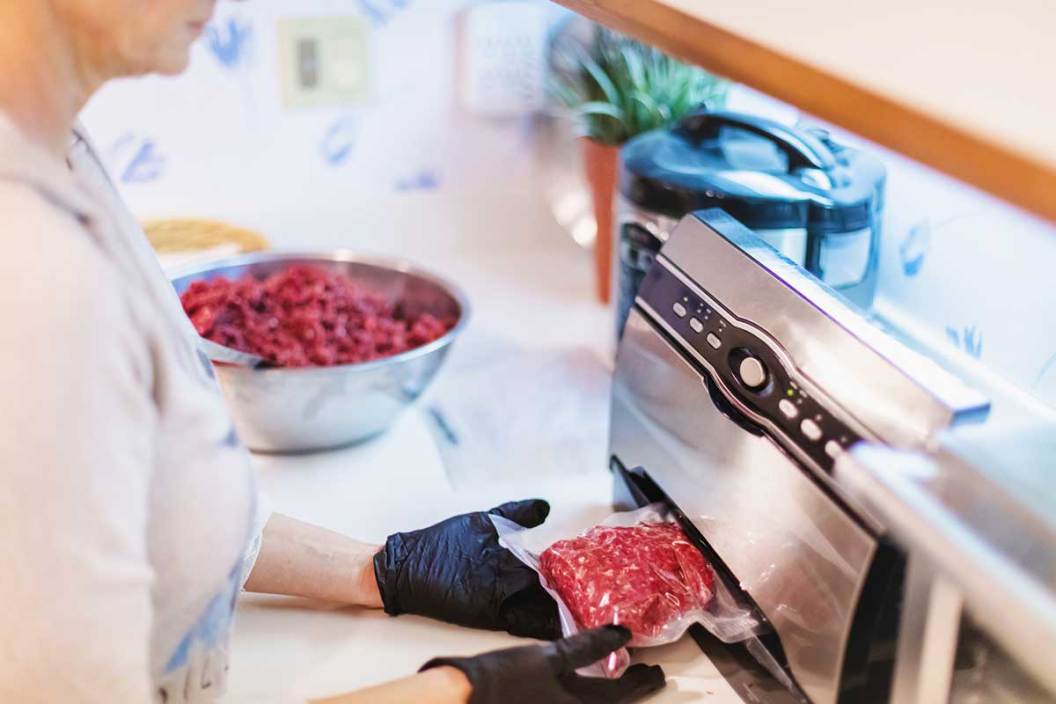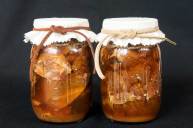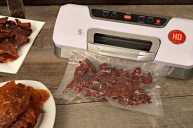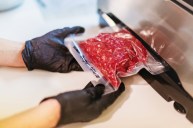Are you adept at vacuum sealing venison? This crash course will help.
Hunting to procure organic, free range protein, free of the additives found in most commercially-raised meat, is quickly becoming one of the most referenced reasons new hunters are taking up the sport.
Wild game yielded from a successful hunt is a cherished product. It makes sense then to take some extra time to carefully and meticulously preserve that precious harvest so it's accessible for an extended period of time.
One big way to take care of it is by using vacuum sealed freezer bags.
Ensuring that venison or other similar game meats taste fresh and freezer-burn free when they hit the plate starts in the field. Even the best stew recipe will flop is the meat is freezer burnt. All game meat should be handled with field-to-table best practices. To make that hard-earned prize last, it needs to be vacuum sealed and frozen. Freezing that top-shelf meat in a zippered bag is akin to storing the finest china in a musty cardboard box. Just don't do it.
Luckily, vacuum sealing meat is a fairly simple way to extend the life of game meats. Here's how it's done.
Start with quality
When purchasing a vacuum sealer, take some time to conduct some research. Read reviews from real users, and buy the best sealer you can afford.
Consider one that has useful features such as a pulse vacuum option, a marinate option, a "delicate" option, a progress bar, and a manual seal button. The same goes for vacuum seal bags. It would be a shame to put in all that work with preparation, purchase a quality sealer, and then sacrifice the quality of the meat and risk freezer burn, simply because of skimping out with bargain bags.
Some popular options are the Cabela's 12'' Commercial-Grade Vacuum Sealer, the Weston Pro 3000 Vacuum Sealer, the NESCO Deluxe VS-12 Sealer, and the FoodSaver GM710-000 GameSaver Sealing System.
Trim away excess
With a sharp knife, trim away any fatty tissue. Do not rush this step - fatty bits can increase the gamey taste of wild meat. The end result will be better if the meat is properly cleaned before sealing. Cut away any damaged, hemorrhaged, or bloody parts. These are ruined and need to go.
Pre-freeze
Not everyone takes this extra step, but it's worth the effort to make sure the end product is the best it can be. Place meat on wax paper-lined cookie sheet and put it into the freezer for an hour. This is enough time for the juices to be pulled back into the meat, so that they are not creating sloppy wet areas where air bubbles can hide. Air is the number one enemy of frozen meat.
Seal
Finally, it's time to seal. Center the meat in the bag. While the machine is sucking out the air, monitor to make sure no air pockets are missed. Machines are just machines, so a watchful human eye can go a long way.
After all the time spent in the woods for the harvest, it would be a shame to let it be ruined at this step. The bag should be taught with no bubbles or empty space. When in doubt, reseal.
Freeze
Once the wild game has been properly sealed it can be put it in the freezer. Vacuum sealed meat will stay fresh in the freezer for up to a year and maybe a smidge longer, potentially up to 15 months, as long as the freezer temperature has remained consistent.
Enjoy delicious venison all year round with the satisfaction of knowing that the meat has been ethically sourced and well taken care of - from field to freezer and finally to table.
Products featured on Wide Open Spaces are independently selected by our writers and editors. However, when you buy something through our links, we may earn a commission.
NEXT: HOW TO MAKE VENISON HASH BROWN CHILI






